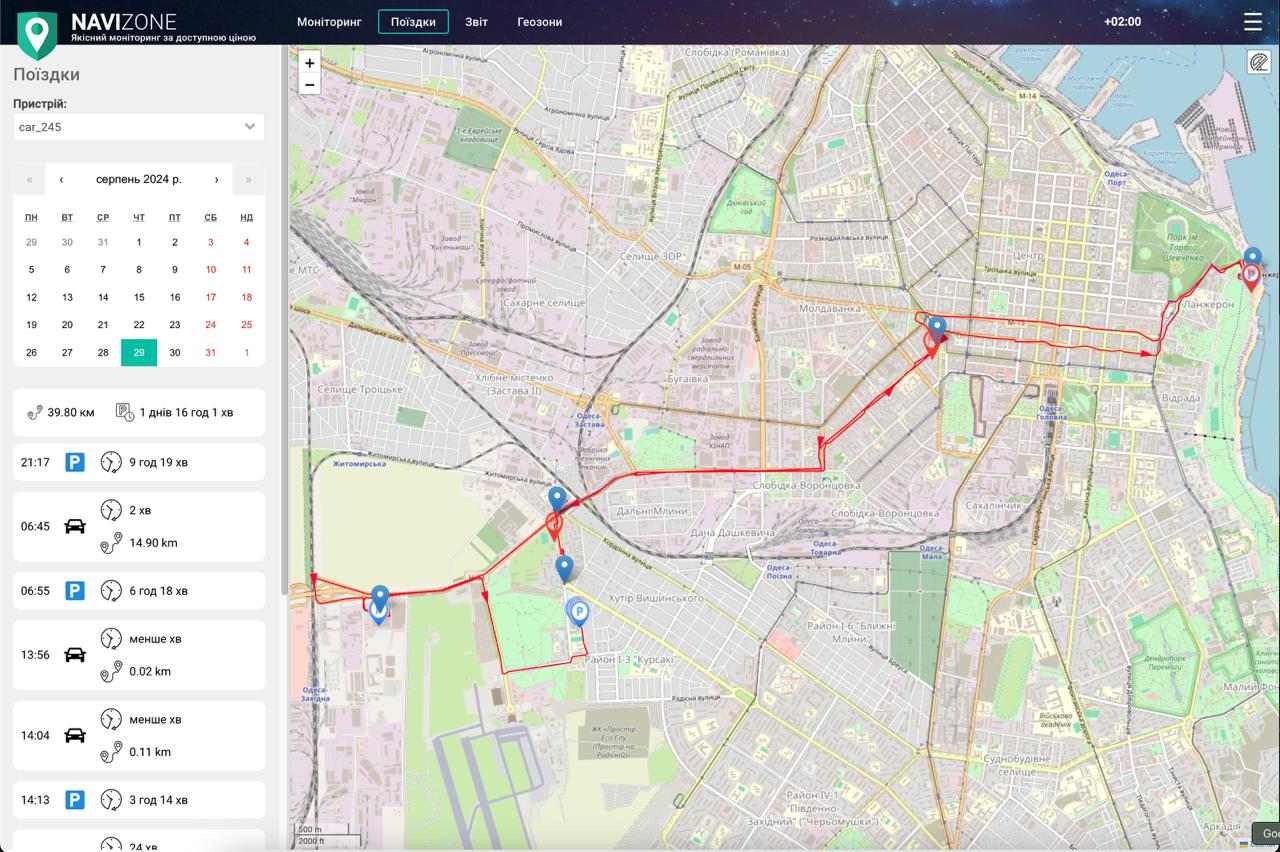GPS Monitoring Software Features

GPS monitoring systems are an indispensable tool for effective control and management of vehicles. These programs allow you to track the current location of vehicles, analyze their routes, monitor fuel consumption, and obtain other key data.
Main features of GPS systems
Modern GPS systems offer a wide range of features that allow you to optimize logistics, increase safety, and improve resource accounting. Let's take a look at the key features that such programs provide.
Monitoring

This section is the basis of the GPS monitoring system. Here, users can view a list of vehicles along with their current locations. The data is presented both in list format and on an interactive map, which allows for real-time monitoring of the fleet's movements.
On this page, the user sees a list of connected vehicles with detailed real-time information:
- Name and model of the car
- Last connection time
- Signal status(GPS, GSM)
- Travel speed (km/h) — for a stationary car 0 km/h is displayed
- Location coordinates(latitude and longitude)
- Last activity time
- Parking status — how long does the car stand idle
Each vehicle has a separate card with icons for quick status recognition.
The “Add device” button allows you to quickly connect a new GPS tracker to the system.
Tracks
This section allows you to view detailed routes for each vehicle for a specified period of time. Key events are recorded on the tracks, such as refueling, fuel draining, stops, parking, speeding, and others. This information allows you to effectively analyze driver behavior and improve logistics processes.

Travel history provides a complete picture of your vehicle's movements. It allows you to view the route and activity of the selected vehicle for a specific day in detail.
Main functions:Map with route — clearly shows the vehicle’s route with starting and stopping points.
Date selection panel — easy transition between days of the week to view your travel history.
-
General statistics for the day:
- Total distance (km)
- Total travel time
-
Details of events during the day:
- Start and stop times
- Duration of the trip or stop
- Number of kilometers traveled
This page is ideal for analyzing driving style, monitoring vehicle activity time, or checking routes for business or personal purposes.
Users
The GPS monitoring system allows multiple users to work simultaneously, enabling access to program functions to be distributed according to employee roles and responsibilities.
Overall, GPS monitoring is a powerful tool for controlling, planning, and analyzing transport operations, significantly improving the efficiency and safety of the vehicle fleet.